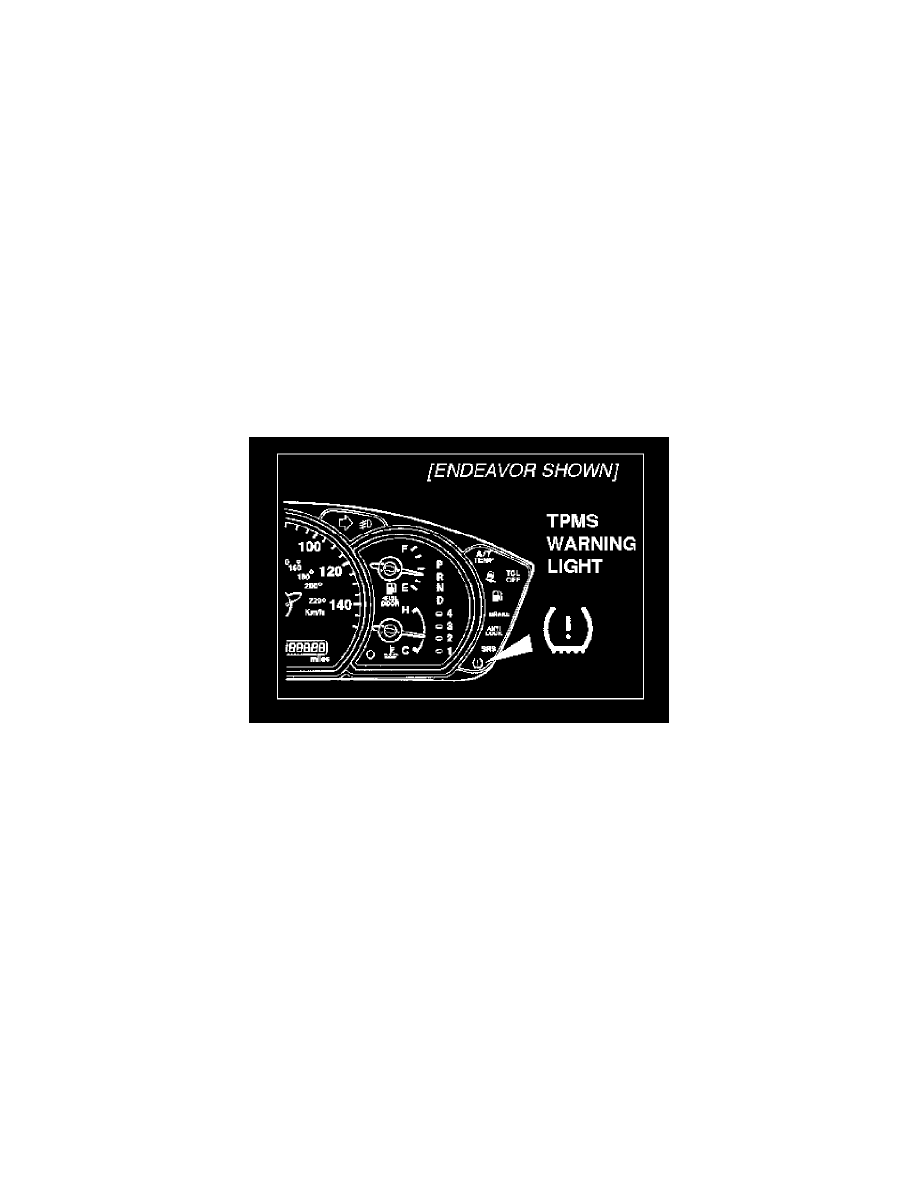Raider 4WD V6-3.7L SOHC (2007)

Tire Monitoring System: Technical Service Bulletins
Tire Monitor System - Operational Characteristics
No.: TSB-06-31-001
DATE: March 3, 2006
MODEL: See below
SUBJECT:
TIRE PRESSURE MONITORING SYSTEM
AFFECTED VEHICLES
2004-on Endeavor
2004-06 Montero
2006-on Galant models equipped with aluminum wheels
PURPOSE
Customers should be advised of the operational characteristics of the tire pressure monitoring system (TPMS) and how the system is affected by changes
in elevation and ambient temperature.
If a tire loses inflation pressure, inspection of the TPMS sensor grommet for deformity/damage should be included in diagnosis. Grommet replacement
parts are available.
TPMS OPERATION
^
The TPMS warning light will come on when the tire inflation pressure in any road tire is below specification.
^
The warning light will go off and the TPMS DTC in memory will be eliminated when tire pressure is increased to specification or above.
^
Always check tire inflation pressures when the tires are cold (vehicle has been parked for at least three hours or driven less than one mile after having
been parked for three hours).
^
The TPMS valve may not seal properly on non-OEM (aftermarket) wheels.
AFFECTS OF ELEVATION AND AMBIENT TEMPERATURE
Customers may experience what appears to be an "intermittent" tire pressure warning light because the air pressure in the tires normally fluctuates under
various operating conditions:
-
When operating the vehicle in different elevations, such as driving to the mountains: Under this condition, the tire pressure will decrease 0.5 psi for
every 1,000 ft. increase in elevation.
-
In cold weather, tire pressure will become lower due to the ambient temperature, and the TPMS warning light will come on if tire pressure drops
below a specific pressure. The tire pressure will increase after driving (tires warm up), and the TPMS warning light will go off.
Regardless of the ambient temperature, set the tire pressures to specification when the tires are cold (vehicle has been parked for at least three hours or
driven less than one mile after having been parked for that time.)
